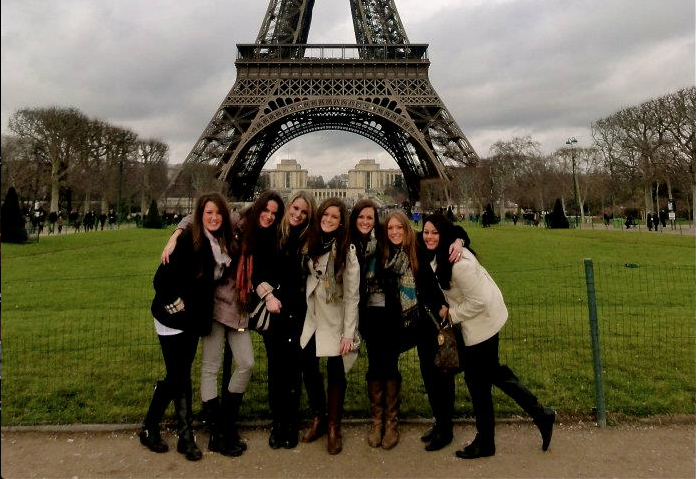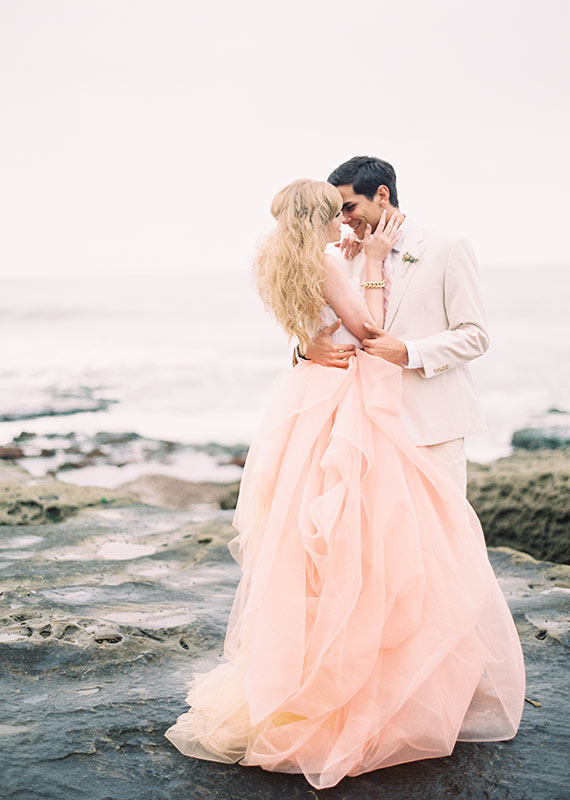For many of us collegiettes, waking up for those dreaded 8 a.m. classes is a struggle we will not miss when the semester ends. There are, however, a growing number of collegiettes who take waking up early, hitting the gym, and balancing classes to a whole new level. They are the nation’s future military leaders: the women in ROTC programs, senior military colleges, and military service academies. The concept behind these programs is simple: get a fully or partially funded college education and a guaranteed job after graduation in exchange for military service.
ROTC, which stands for Reserve Officer Training Corps, is an option at more than 1,000 colleges and universities across the country, and supplements a typical college setting with military training and a military curriculum. Senior military colleges, including Virginia Military Institute and The Citadel, also offer both a rigorous college education and a rigorous military experience.
Finally, there are four military service academies, including the United States Military Academy, also known as West Point, in West Point, N.Y. These schools are highly selective, highly prestigious institutions that offer students a free college education (valued at more than $225,000!) in a demanding military environment.
A West Point Woman
![]()
Olivia is a first-year cadet at the U.S. Military Academy. She is not called a freshman or a first-year, but rather a “plebe.” She starts her days at 0600—6 a.m. to the civilians out there—to get dressed and ready to go in the required uniform of the day. She makes sure that every part of her uniform is perfect, all the way down to her shined shoes, and heads to mandatory breakfast with the rest of the cadets by 0700.
Her classes may end at 4 p.m., but Olivia’s day is far from over then. After class, there are two hours set aside for all of the cadets at West Point to participate in athletic activities. Each cadet is required to participate in a sport at some level, and Olivia is on the Army rifle team. Finally, she has dinner in the Hogwarts-esque mess hall that is large enough to seat all 4,000 cadets at once for meals. After dinner, it is back to the barracks for homework and personal time until lights-out, or “taps,” at 11 p.m.
There are no frat parties or sorority mixers for Olivia and her fellow cadets. On the weekends, Olivia is required to stay at West Point, unless she applies for a weekend pass and is granted leave time. As a plebe, however, that time is limited for now, but she will have more opportunities to take these passes as she gets older.
Olivia has volunteered for a serious commitment beyond the rigid lifestyle she will maintain throughout her four years at the academy. When she graduates, like every cadet who graduates from West Point, she will be commissioned as a second lieutenant in the U.S. Army and she will be required to serve a minimum of five years on active duty and three years in the Army Reserve.
Olivia says she isn’t sure if she’ll stay in the Army after her requirement is fulfilled because she wants to be able to settle down and have a family, which is obviously difficult for a woman in the military. “That’s a consideration women have to account for that our male counterparts do not,” she says.
Not surprisingly, those male counterparts at West Point vastly outnumber Olivia and her fellow female cadets. The West Point Class of 2016 consists of 1,002 cadets, and Olivia is just one of the only 191 women in that class.
Men and women are considered equals and treated as such throughout the various military college programs—we would expect nothing less from the red, white, and blue! However, there are different standards for males and females within the physical fitness requirements. Also, female cadets at West Point take a self-defense class during their first year, while male cadets take wrestling and boxing.
Olivia assures us that the gender divide isn’t even that noticeable on a daily basis. “There are some different expectations,” she says, “but I think they are of equal rigor and fairness, and I don’t think it’s particularly harder for either gender here.”
By attending West Point, Olivia has made a decision that few of her fellow collegiettes would ever even consider. “I chose to come to West Point because I had been looking at some of the senior military colleges in the U.S., but thought that if I was to pursue a career in the military, I might as well get the best training possible,” she says. “And I am certainly happy with my choice.”
Campus Cadets
![]()
The rigorous military academy lifestyle isn’t for everyone. But, if a collegiette doesn’t want to go to a military academy, that doesn’t mean she can’t still serve her country… and save some big bucks on a college education!
In fact, the life of a military woman in college may not be as drastically different from yours as you might think! Carol and Hadriane are members of Detachment 590 in the U.S. Air Force ROTC program at the University of North Carolina at Chapel Hill. They each have the typical schedule of a UNC student, but they add to it with Air Force classes, a leadership workshop, and up to three hours of physical training (PT) each week.
![]()
Hadriane sporting her Air Force blues around campus!
Not even waking up at 5:30 a.m. twice a week for PT can dull the ROTC atmosphere for these two girls. “Everyone is really motivated,” Hadriane says. “There’s a good sense of spirit.”
Similarly, Carol appreciates the camaraderie. “Even though there’s a bunch of people looking to do different things, we’re all here for one cause,” she says.
That cause represents the backbone of the ROTC program. Like the cadets and midshipmen at the military service academies and senior military colleges, Carol and Hadriane will serve in the military when they graduate.
Like Olivia, Carol and Hadriane are a minority among the cadets in their program. The Air Force ROTC detachment at UNC currently includes 30 male cadets and 16 female cadets, says Capt. Steven Duckers, the Recruiting Flight Commander of Detachment 590.
But, also like Olivia, Carol and Hadriane are happy with the decision they’ve made and the environment they are in. “I was thinking I was going to go in being the only girl, but there’s actually a significant amount of us,” Carol says. “The only difference between us is physical fitness, which is nice.”
Hadriane says the male-dominated atmosphere can even be “refreshing,” especially at a university with a high female-to-male ratio like UNC.
![]()
Carol shows her Air Force pride on UNC’s campus!
Carol plans to use her military service to help finance her goal of going to med school, while Hadriane thinks the military will offer her great experience to complement her global studies and linguistics majors.
“My dad was in the Army,” Hadriane says, “and it makes sense with my major, too.”
“Job security is always a plus,” she adds with a laugh.
The stories of these remarkable women are certainly a testament to girl power everywhere. As Olivia says, “A lot of people have the misconception that females are weak, and we are often stereotyped as such next to our big, macho friends, but in the end, we hold our own and prove that we can handle what the Army throws at us.” You go, girl!
Your Marching Orders
So do you think you’ve got what it takes? If you’re interested in pursuing a career in the military, or even just getting a little financial help with your college education, one of these programs might be for you!
![]()
Each of the military academies and senior military colleges has its own application, but the admissions process is quite rigorous, and these institutions are among the most selective in the country. The West Point Class of 2016 includes 100 high school valedictorians, and 72 percent of the class ranked in the top fifth of their high school class. Each of the academies, with the exception of the Coast Guard Academy, requires a nomination from a U.S. congressman for acceptance.
If the military college setting isn’t for you, you may be interested in an ROTC program. High school students can apply for the ROTC Scholarship Program between May 1 of their junior year and December 1 of their senior year, according to Capt. Duckers.
“It’s a pretty competitive program to get a scholarship, but it can be very rewarding considering it could potentially pay all the costs for your entire undergrad years,” he says.
But you don’t have to be a high school student to join ROTC! College students can sign up for an ROTC class or talk to a recruiter to get involved, and they can still apply for the scholarship once they are in the program.















































































